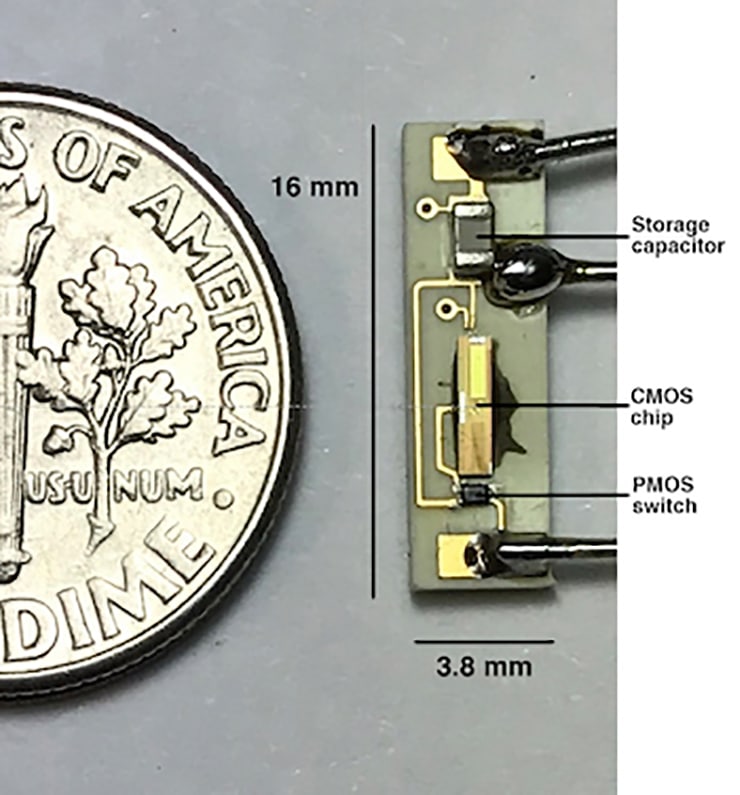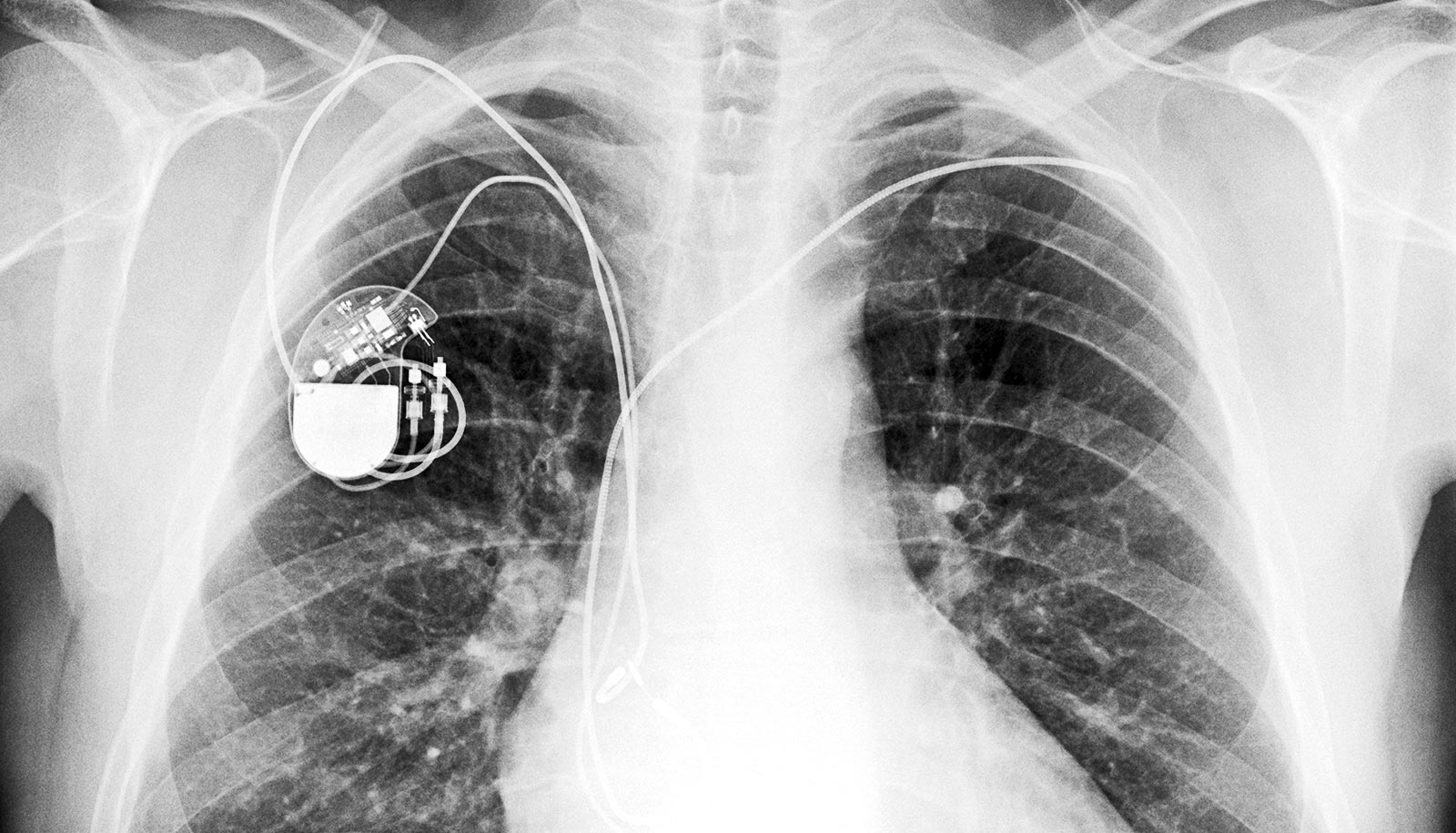Researchers have created a wireless pacemaker that requires no battery and can be directly implanted into a patient’s heart.
The pacemaker harvests energy wirelessly from radio frequency radiation transmitted by an external battery pack. In the prototype, the wireless power transmitter can be up to few centimeters away.
Pacemakers use electrical signals to prompt the heart to keep a steady beat, but they’ve traditionally not been implanted directly into a patient’s heart. Instead, they’re located away from the heart, where surgeons can periodically replace their onboard batteries with minor surgery; their electrical signals are transmitted to the heart via wires called “leads.”

Some of the common problems with this arrangement are complications related to the leads, including bleeding and infection. The prototype wireless pacemaker reduces these risks by doing away with leads, says Aydin Babakhani, professor of electrical and computer engineering at Rice University, in whose lab the work took place.
He says other recently introduced lead-less pacemakers also mitigate some of these complications, but their form factors limit them to a single heart chamber and they are unable to provide dual-chamber or biventricular pacing.
In contrast, battery-less, lead-less, and wirelessly powered microchips can be implanted directly to pace multiple points inside or outside the heart, Babakhani says.
World’s tiniest pacemaker implanted without surgery
“This technology brings into sharp focus the remarkable possibility of achieving the ‘Triple Crown’ of treatment of both the most common and most lethal cardiac arrhythmias: external powering, wireless pacing, and—far and away most importantly—cardiac defibrillation that is not only painless but is actually imperceptible to the patient,” says Mehdi Razavi, director of clinical arrhythmia research and innovation at the Texas Heart Institute and an associate professor at Baylor College of Medicine, who collaborated with Babakhani on development and testing of the new pacemaker.
The chip at the system’s heart is less than 4 millimeters wide and incorporates the receiving antenna, an AC-to-DC rectifier, a power management unit, and a pacing activation signal. A capacitor and switch join the chip on a circuit board that is smaller than a dime. The chip receives power using microwaves in the 8 to 10 gigahertz electromagnetic frequency spectrum.
The frequency of the pacing signals produced by the pacemaker can be adjusted by increasing or decreasing power transmitted to the receiving antenna, which stores it until it reaches a predetermined threshold. At that point, it releases the electrical charge to the heart and begins to fill again.
The team successfully tested the device in a pig and demonstrated it could tune the animal’s heart rate from 100 to 172 beats per minute.
Pacemakers of the future: No batteries required?
The team is further developing its technology in collaboration with researchers at UC San Diego and Rice.
The researchers will introduce the pacemaker at the IEEE’s International Microwave Symposium (IMS) in Honolulu June 4-9, along with a short paper describing the device. The paper’s authors are from Baylor College of Medicine and Texas Heart Institute.
Source: Rice University



